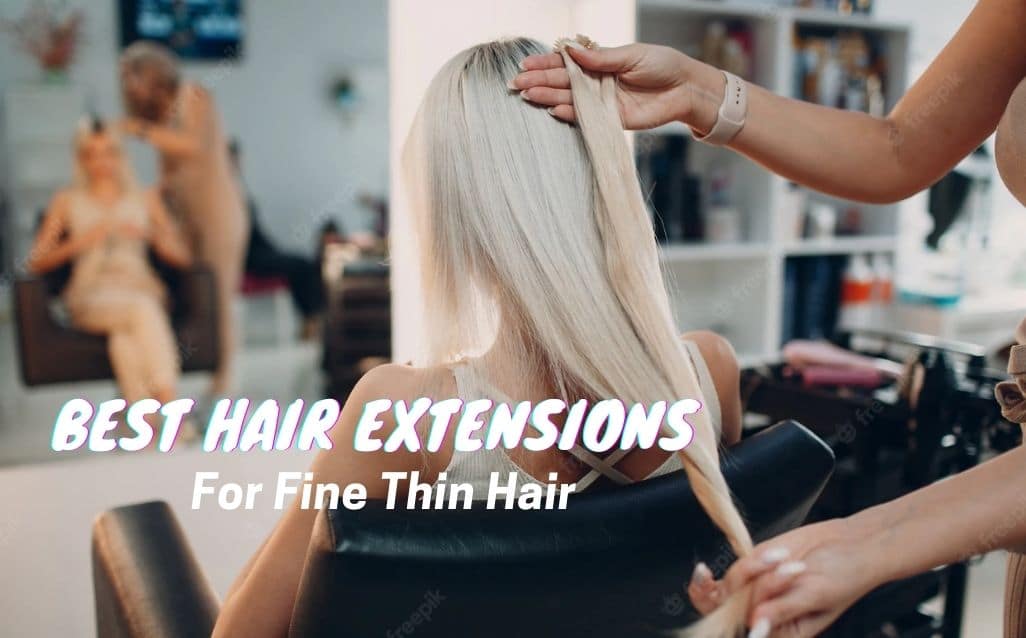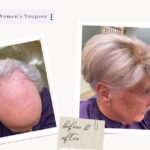When it comes to ventilating hair to a wig, you will find that the use of knots is the most common hair ventilation technique. Knotting hair is highly flexible as it can be done to almost all base materials. Whilst there are two types of knots that we can make, they are flat knots and splits knots. We are going to focus on split knots in this blog.
Split knots as its name, the two hair stands are not like flat knots stay close together, they are split. Also because the two hair strands split, the hair with split knots is more lifted. Split knots also are the most used knot type. It can get a natural or strong effect on many materials. There are two types of split knots: single split knots and double split knots. We will explain in detail how it is that our technicians ventilate hair this way, how single split knots and double split knots differ from one another and the type of effect they both have on the overall appearance of the hair of a hair system. You will this blog to be a good accompaniment to our video about single split knots and double split knots.
Single Reverse Split Knots
The technician will loop the strand of hair around a ventilating needle and pull it under a strand of the lace material or through a hole in a skin base before they reverse back on themselves with the needle to make a knot. The fact that a single split knot is just reversed once means the knot is very small. The knot, in effect, creates two strands of hair (a long one and a short one) that point in different directions. To get around this potential problem, after making a knot, the technician needs to press down on the knot with their finger and then rub it. This will ensure the two strands of hair stay together.
Sometimes you find that single split knots lead to a messy hair direction or that the hairs split and create a parting. This happens if the knotting worker did not do a proper press and rub after finishing the knots. There is a way of correcting this which you can learn about in our future video which will publish soon.
In terms of the effect single split knots have on the final look of a hair system, you will find that hair with single split knots has a lot of natural lift. We normally put single split knots on the place where it needs a very natural effect, like the front hairline of the lacing system. Also, we will do single split knots all over the Super Fine Swiss lace pieces. When clients ask for Super Fine Swiss Lace, they expect an extra natural effect. When this time, single split knots are the best choice. Another side, for PU bases, we will do single split knots except for the back and sides if there is no special requirement from the clients. This is because of that, for the PU base, we will brush a layer of poly after the knotting is finished. The poly layer will seal the knots and make them stay truly strong enough on the base, no need to do any kind of double knots to make a strong knot. Moreover, for Clear PU, it cannot hold a double knot. Because there is no layer of mono or gauze, then pull the hair two times to make double knots, the clear PU base will be broken.
Double Reverse Split Knots
To make double reverse split knots, we repeat the same technique as before but this time, the hair is reversed twice with the ventilating needle. Consequently, you are left with bigger but stronger knots. This time, the two strands of hair from the knots point in a similar direction, unlike single split knots. That’s
because the hair was reversed twice, the first time makes the two strands point in a completely different direction, but the second time makes the two strands closer than the first time.
The hair of double split knots is much more obedient than that of single split knots in the sense that it is very responsive to your styling demands. Also because of this point, double split knots don’t need that much press and rub like single split knots.
Double split knots also are very often to be used. For the places where the clients ask for durable and strong, we will do double split knots. For example, it will be used on the rest area of the lace unit except the front hairline, which also can often be used on the mono bases which clients expect strong and durable.
Closely linked to split knots are flat knots that are very popular to be used in the hair toupee industry. We have previously written about flat knots and if you have not read our blog then we strongly recommend you familiarize yourself with these kinds of knots too. That way you will be able to make the best possible suggestions to your clients when it comes to recommending hair systems for them.




